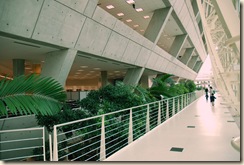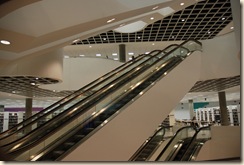Yesterday, I enjoyed an unexpected visit to Lincolnton, North Carolina. The closest town of any size to Iron Station here. Not to take anything away, now, from Pumpkin City, or Boger City, or any other nearby “cities.” But Lincolnton is, in fact, bigger.
The borrowed connection to the internet here on Vesuvius Furnace Road stopped working yesterday. So I went in search of a WiFi cloud.
Lincolnton is the county seat of Lincoln County. Named not after Abraham Lincoln, as you might expect, but after a considerably earlier, and less controversial [at least here] Lincoln. Benjamin Lincoln. A general during the Revolutionary War.
[click photos for larger images]
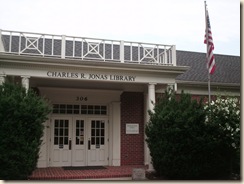 I first made a bee-line to the Lincolnton public library on Main Street. Not far from Lincolnton’s famous rear-facing courthouse. More on that interesting building in a later post.
I first made a bee-line to the Lincolnton public library on Main Street. Not far from Lincolnton’s famous rear-facing courthouse. More on that interesting building in a later post.
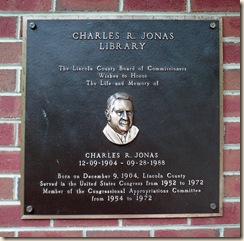 This Library is named after Lincoln County famous son, Charles R. Jonas, an important member of the U.S. Congress during the 1950s and 1960s. Jonas is memorialized with a small display inside, and this plaque at the front entrance.
This Library is named after Lincoln County famous son, Charles R. Jonas, an important member of the U.S. Congress during the 1950s and 1960s. Jonas is memorialized with a small display inside, and this plaque at the front entrance.
Unfortunately the County library system here has yet to offer patrons a WiFi cloud. Budget seems to be very tight.
A kind patron heard my plea, though, and directed me down Route 73 a ways to Morgan’s Dairy Bar. Near Lincolnton’s huge Lowe’s Home Center.
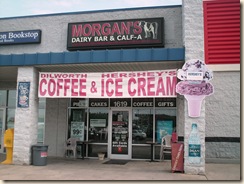 Talk about unexpected good fortune! Not only does Morgan’s offer free five-bar WiFi service. They also serve some of the tastiest ice cream I’ve eaten in a long time.
Talk about unexpected good fortune! Not only does Morgan’s offer free five-bar WiFi service. They also serve some of the tastiest ice cream I’ve eaten in a long time.
The sort of fresh ice cream taste only found in a product that’s locally made. Reluctantly, out of a sense of obligation, doncha know, I ordered a large vanilla sundae with chocolate topping. This is the sort of ice cream store where even plain vanilla is delicious! Ah, the sacrifices we bloggers make to publish our materials …..
After posting the last blog entry, checking a few dozen e-mails, downloading the Japanese political news, and finishing the “large” vanilla sundae, which was roughly the size of Mt. Rainier, I left Morgan’ Dairy Bar. Walking out past the 30-some flavors of ice cream displayed in the long glass case with hardly a glance! Fully intending to drive straight back to Iron Station.
 Well! Talk about double temptation. Can you imagine what I found right next door to Morgan’s Dairy Bar? The Lincolnton Bookstop. A bookstore devoted mainly to used paperbacks. That accepts trade-ins!
Well! Talk about double temptation. Can you imagine what I found right next door to Morgan’s Dairy Bar? The Lincolnton Bookstop. A bookstore devoted mainly to used paperbacks. That accepts trade-ins!
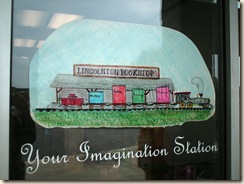 After looking at the logo in the window, and seeing the shelves, I had to go inside. I mean! How often does one come across such a store? Anywhere? Let alone, unexpectedly in Lincolnton, North Carolina.
After looking at the logo in the window, and seeing the shelves, I had to go inside. I mean! How often does one come across such a store? Anywhere? Let alone, unexpectedly in Lincolnton, North Carolina.
The owners opened this store less than a week ago, and have big plans for it. Their stock of books, train displays, and overall layout was so interesting that I hope to devote a whole blog entry to it in the near future. During my next trip to Iron Station.
In the meantime, just let me note that I counted ninety-seven [that’s 97!] volumes of Louis L’Amour paperbacks in their Western section. More than I’ve seen anywhere. Library or bookstore. Bookstores like this are especially important to younger and retired readers. Those of us with limited budgets to feed our reading habits. So, thanks for a great store. Hope to see you again soon.
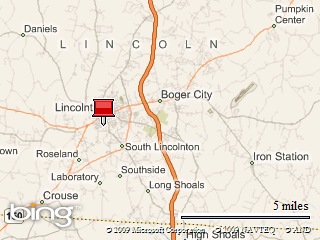


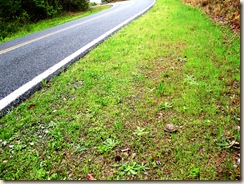
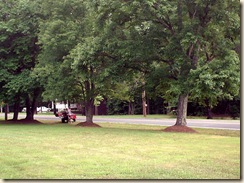
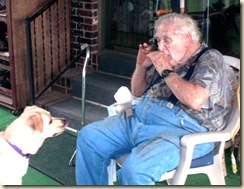
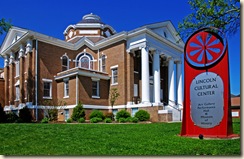
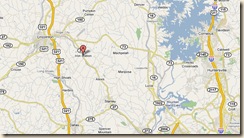
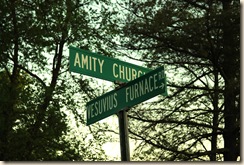
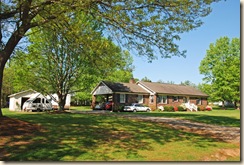
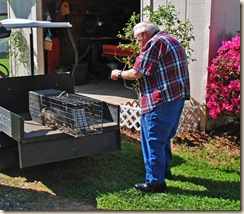
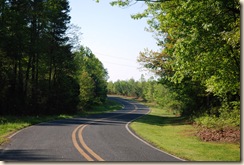 Today, as you see in the photo above, Vesuvius Furnace Road boasts a solid macadam surface, with a yellow solid double line. Even white guidelines on each side.
Today, as you see in the photo above, Vesuvius Furnace Road boasts a solid macadam surface, with a yellow solid double line. Even white guidelines on each side. 
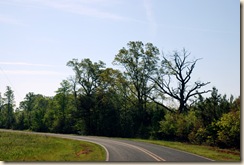
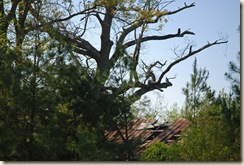
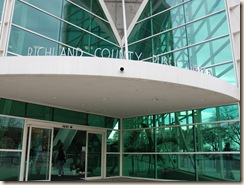
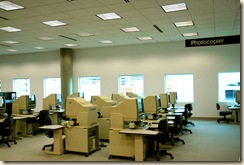

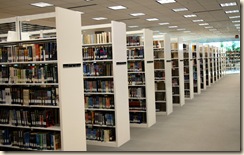
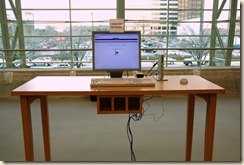
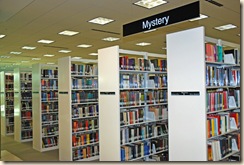

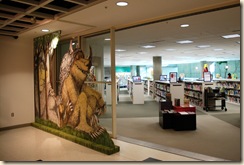
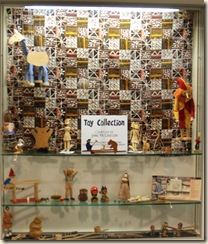


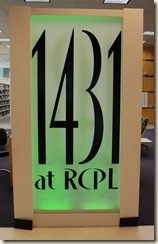


 But this remarkable building alone makes a visit worthwhile. It’s a modern structure that, for once, doesn’t appear to be striving for attention and acceptance. Like some outrageous infuriate-your-daddy teen-age haircut.
But this remarkable building alone makes a visit worthwhile. It’s a modern structure that, for once, doesn’t appear to be striving for attention and acceptance. Like some outrageous infuriate-your-daddy teen-age haircut. 